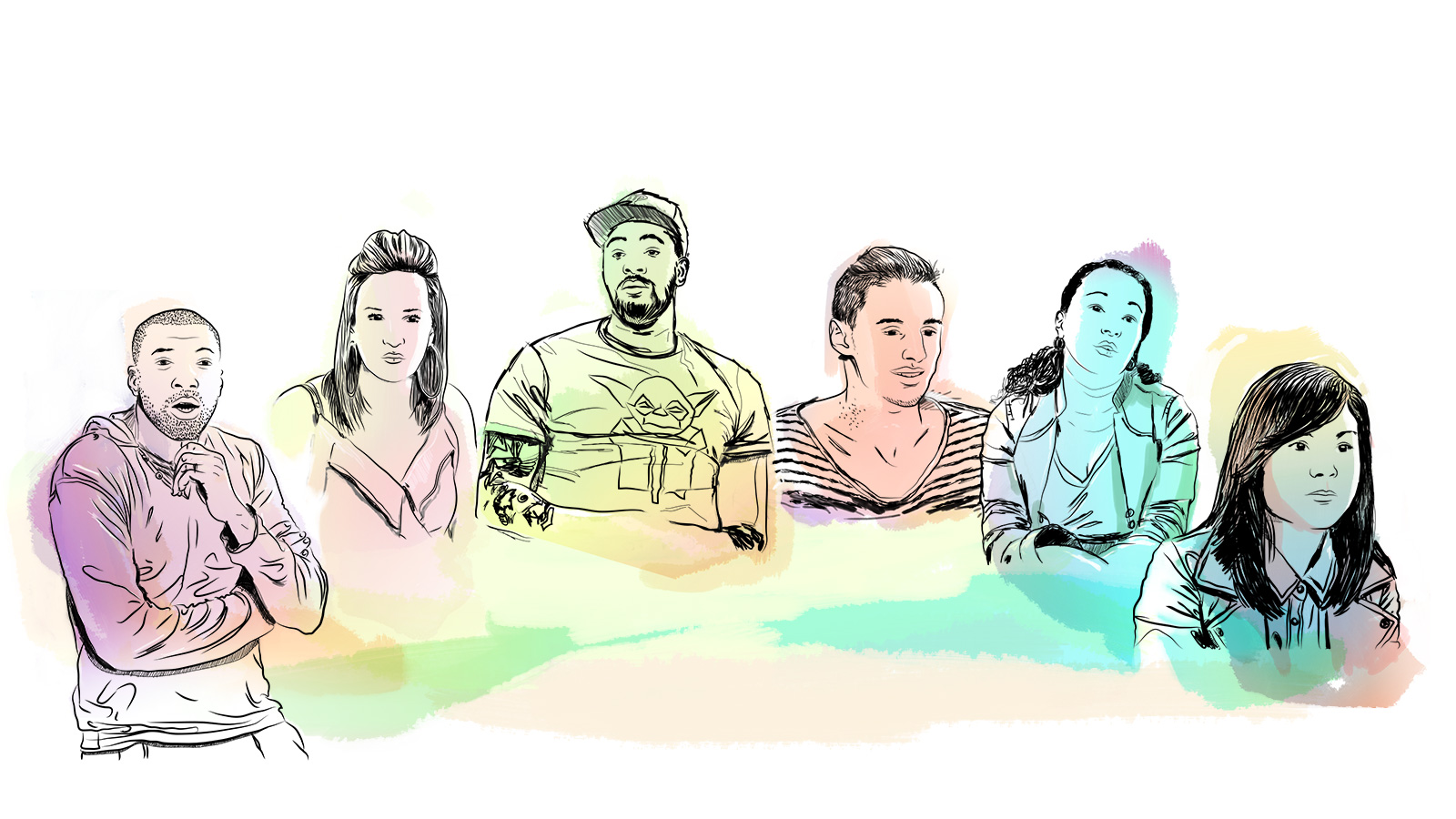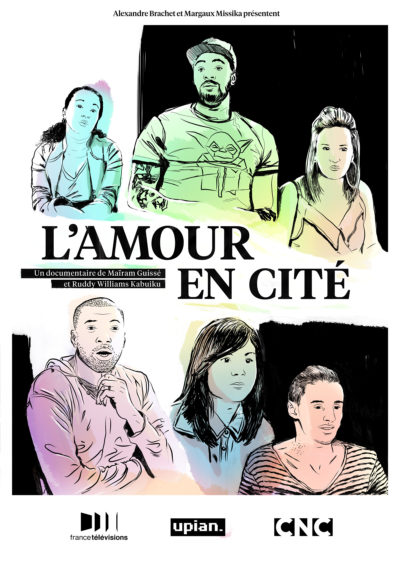L’Amour en cité (Love in the housing projects) is a series of six love stories set in different French housing estates. For some, the neighborhood is a hostile terrain where you need quite a dose of character to assert yourself and live out your story in the open. Reconciling love with culture, tradition and environment is complicated.
In 2014, having to choose between the other and one’s family is not that uncommon. Trésor, Jacky, Farah, Ali, Sofiane and Julie, interviewed in turn, are the protagonists of this story.
Immersed in their own environment, in the suburbs of Paris, Lille or Rouen, they recount their love stories and open up with disconcerting sincerity, never lamenting or victimizing. Love, even if it’s forbidden territory, always reclaims its rights.
At the heart of the film, the characters in L’Amour en cité are the key. It’s through their words and confidences that the doors to their neighborhoods open. It’s also through their individual journeys that the relationships between men and women, generations and cultures that weave these microcosms are gradually revealed.
The city’s omnipresence
From the roof of a building, the camera scans the horizon, we see taller buildings on the screen, we hear screams; young adults play soccer on a playground.
Immersed in their environment, in the suburbs of Paris, Douchy-les-Mines or Rouen, the characters recount their love stories where they were born: in the heart of the housing estate.
The city comes to life through them, reflected in the way they speak and gesture. Omnipresent on the screen, it represents the story’s secondary character.
Sensuality through dance
« In the suburbs, you can be sensual with ragga or zouk. Like love, dance is part of us, encompassing us all.
Maïram Guissé & Ruddy Williams Kabuiku
In front of the long buildings of the Olympiades, a couple dances. They recount the end of a story and the mechanisms that govern it: when complicity gradually gives way to incomprehension, when unease sets in, when he annoys her and she seeks him out.
In L’Amour en cité, dance expresses love in its physical, sexual dimension. It contrasts with the modesty of the interviewees.








